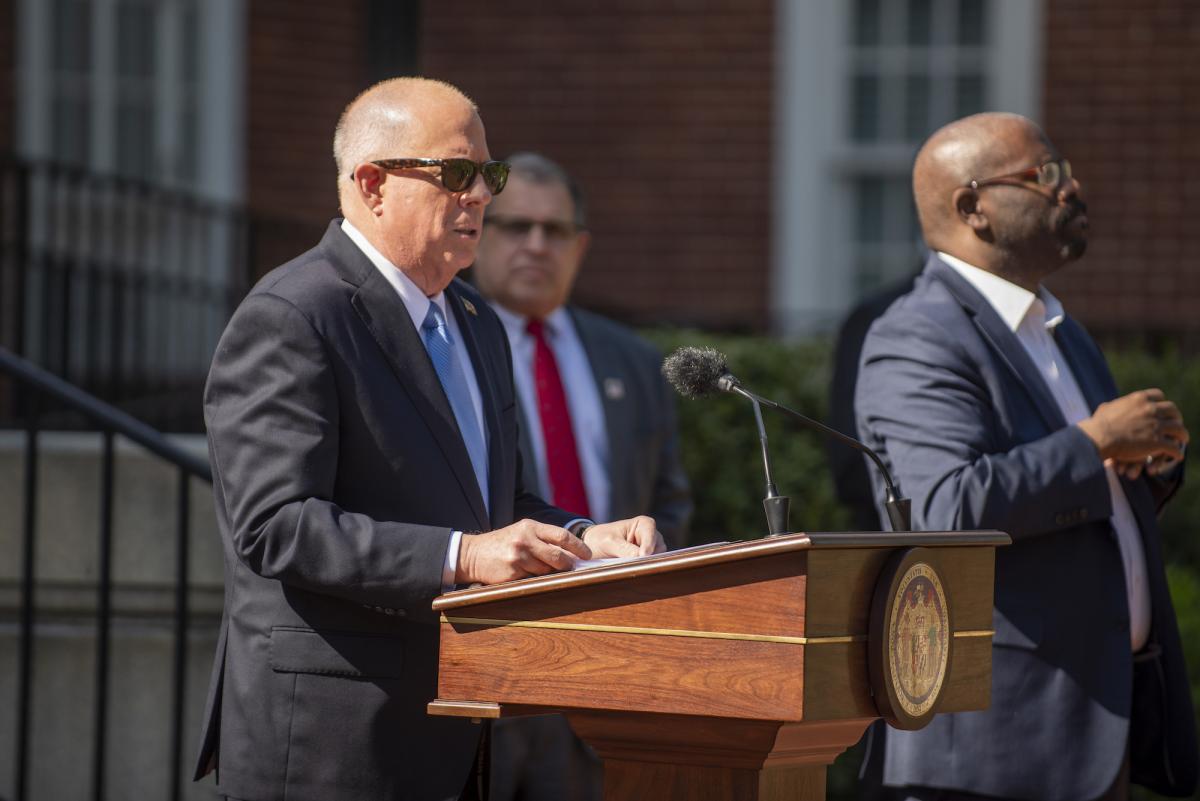In the latest sign that the state is emerging from a pandemic that has upended everyday life for more than a year, Gov. Lawrence J. Hogan Jr. (R) on Wednesday eased most of the remaining restrictions on public gatherings and commerce.
As a result, restaurants can return to 100% capacity both indoors and outdoors, effective on Saturday.
State restrictions on indoor entertainment venues, conventions and other businesses are also being lifted. And restrictions on outdoor professional sports, entertainment and arts venues are also being pulled.
“Effectively, as of Saturday, every business in Maryland will be able to open at 100%, with no restrictions,” Hogan told reporters outside Government House.
As of Wednesday, two-thirds of the state’s adult population has received at least one dose of a COVID-19 vaccine and more than 2.4 million Marylanders have been fully vaccinated.
The state’s test-positivity rate is a 2.74%, its lowest level since September. Hospital bed usage has been falling for almost a month. And the state has a plentiful supply of vaccine, with walk-up opportunities available at scores of locations, including mass-vaccination sites and pharmacies.
“The Maryland Chamber of Commerce is thrilled businesses can fully open their doors and bring Marylanders back to work with these eased restrictions,” Chamber Vice President Andrew Griffin said in an email.
“We align with the governor in following CDC recommendations and encourage the public to get vaccinated so Maryland can continue along the path of economic recovery.”
The only restriction that Hogan is retaining is the mandate to wear masks inside businesses. That requirement will be lifted when Maryland reaches the federal goal of 70% adults receiving at least one dose of a vaccine, he said.
“President Biden set the goal of trying to get things back to normal by the Fourth of July; here in Maryland, our plan is to get everything back to normal by Memorial Day,” the governor said.
Hogan said people who have yet to get vaccinated were slowing the state’s return to full economic activity and social interaction — and putting themselves and their loved ones at risk.
Anne Arundel and Harford counties announced immediately that they will lift restrictions in line with Hogan’s order.
“After consulting with our Health Officer, we have decided to follow the State’s lead,” Anne Arundel Executive Steuart Pittman (D) said in a statement.
“We believe that our low case rates will continue through the summer, but the only effective way to prevent a fall surge in cases will be a summer surge in vaccinations.”
Prince George’s County announced a hybrid approach, some businesses allowed to reopen at 100% capacity and others at 50%.
The governor’s actions mean sports teams can return to full capacity if they choose to, but it does not require them to do so.
In a May 4 letter to season-ticket holders, Ravens president Dick Cass wrote, “[W]e are optimistic that we will have a full stadium of fans this season.”
“We will continue to work diligently with state and local agencies to prepare to host fans safely,” he added. “To achieve our goal of a full stadium, we encourage everyone in our community to get vaccinated and continue following the best practices recommended by public health authorities.
The Orioles are expected to announce a stadium policy next week. It could not immediately be learned on Wednesday how the Washington Football Team will respond.
The governor said Maryland’s NFL teams “are both very anxious to be at 100% in the fall.”
The annual Preakness Stakes, which will be run on Saturday, was authorized to go to 50% capacity but opted for 10%. Hogan said he did not expect the Maryland Jockey Club, which owns Pimlico Race Course, to change its policy on short notice.
“Next year, hopefully, we’ll have it full again,” he said.
The cruise terminal in Baltimore will reopen soon, Hogan said. The CDC is working with the nation’s ports and the industry on protocols allowing passengers to cruise again.
The governor said the state Department of Labor will petition the federal government to reinstate a work-search requirement for people receiving unemployment insurance benefits.
Those requirements were suspended early in the pandemic, as business owners shed workers and job opportunities were scarce.
But now, some employers — in Ocean City and elsewhere — report having difficulty finding workers, Hogan said.
“It’s not just anecdotal. There are some people that have made the decision to stay home and to collect unemployment rather than returning to work,” he said. “We hear that every day from hundreds of people.”
The Maryland Center on Economic Policy, a progressive advocacy organization, called the reinstatement of work-search requirements “an additional obstacle for people who are out of work and an additional administrative burden” for the agency that administers benefits.
“It is premature to begin reinstating work search requirements for people relying on unemployment payments, putting at risk the economic support that has been keeping families afloat,” said Kali Schumitz, the center’s director of communications, in a statement.
“While the situation is rapidly evolving, data suggest that there are still far more job-seekers than available jobs.”
Asked whether he would join other GOP-led states in cutting expanded unemployment benefits, Hogan said Maryland would not.
“There are some people who really have been trying to find work and do need those benefits and Maryland’s cost of living is higher than a lot of those other states,” Hogan said. “At this point, we think we’re taking the steps that we need to take.”
By Bruce DePuyt



